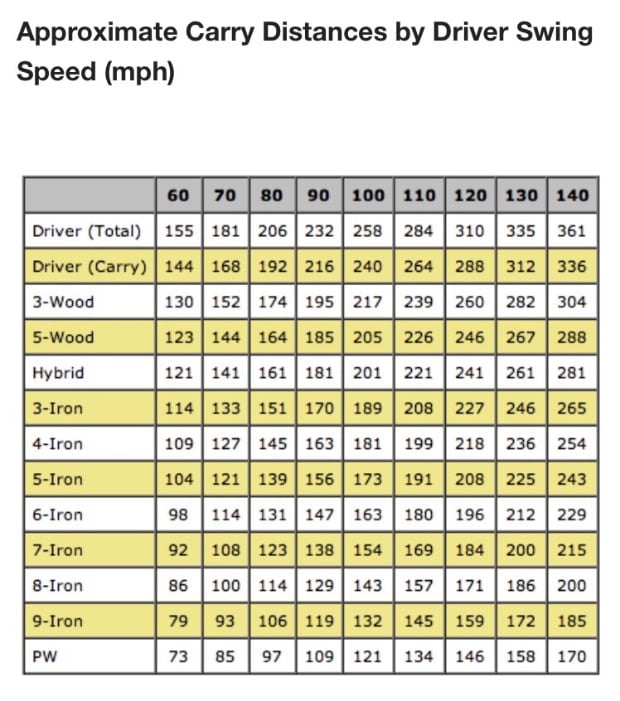
If you're looking to improve your short game, learning how to chip in golf is a key step. For a solid shot, practice makes perfect. Avoid speeding through the ball and flicking the ball. To avoid fracturing your wrists, you'll want to practice the best setup.
Chipping can help you improve your short game
Your short game is one of the most important aspects to golf. On average, you will be hitting around 40 percent of your shots on the golf course. That doesn't even include your bunker shots, chip shots, or other short shots. If you can play a good short game, it will make the game much more enjoyable.

Practice makes perfect
While practicing chipping can improve your game on the course it is important to plan your practice sessions. Your practice sessions will not be productive if you don't have something to aim at. This skill can be practiced with different club sizes to improve your feel and sense of distance.
Avoid flinging the ball at the ball
The key to success with chipping in golf is not to flick at the ball! This is a mistake that many amateurs make. Instead, keep your head moving forward throughout the shot. This will help ensure a precise strike. To avoid wrist breaking, you should keep your elbows and wrists straight.
Accelerating through the Golf Ball
You may be struggling with your chipping skills. Learn how to accelerate through golf balls. This allows you to keep a constant speed throughout the shot so that the clubhead makes contact with the ball and breaks through the surface. As you accelerate through the ball, hinge your wrists and take the club back.
Positioning your body weight over your left foot
The most important part of chipping is to place your body weight above your left foot. This will allow for a more precise strike and a greater arc. The weight ratio for a chipping shot should be about sixty percent front foot to forty percent back foot. If your stance is not centered, the weight of the club will be transferred to your front feet and it will impact the ground too quickly.

As a chipping club, use a wedge.
A wedge can be used as a chipper in the game of golf. This will allow you to achieve more distance. These shots are best for advanced players who prefer a lofted club, but a lower lofted one may also work. The ball's position on a green will impact the loft of a club. If the ball is approximately two to three meters from the green, and the ground is firm then a lofted wedge could be the best choice.
FAQ
Are there any skills required to play golf?
No. All you need are a pair walking shoes, towel, and a couple of clubs.
What are the differences between different golf courses?
There are many types of golf courses. Some courses are intended for beginners while others can be used by more experienced players.
Some courses are near rivers, lakes, mountains, or forests. Others are found in urban areas. There are many golf courses, from public parks to private estates.
What is the difference between a driving range and a putting green?
Driving ranges allow players to hit balls at distances between 50 and 300 yards. For putting practice, players can use putting greens.
What is a golf ball like?
The majority of golf balls are made out of rubber or plastic. It bounces when it hits because of its dimpled surface.
How do I learn to play golf?
Learning to play golf requires practice and patience. You can improve your game by practicing. Here are some tips for you to improve your game.
-
You should practice regularly. Golf requires constant concentration. Practice is the best way to improve your game.
-
Play with others who are skilled at playing. Playing with other people helps you develop your own style of play.
-
Before you start practicing, read about golf. This will help you get a sense of the things you should work on.
-
Try not to learn everything at once. You can start by focusing on one area of your game. You might focus on improving your putting, or learning to chip. This will help you feel more confident about your game.
-
Take lessons. Take lessons to learn how to position yourself, swing speed, posture, and many other important aspects.
-
Try new techniques. Try out new grips, stances or swings.
-
Keep records. Keep track of where you are at. You will be able to identify your areas of improvement.
-
Join a local club. Many clubs offer lessons for free. Many clubs offer free lessons and have helpful members who are willing to help newcomers.
-
Look for a coach. Find a coach who can help you with specific aspects of your game.
What happens at the conclusion of a round golf?
At the end of a round, the player with the lowest score wins. If two players tie for first place they each win.
If more than three people are tied for first place after 18 golf holes, they each share the prize money.
If two people are still tied after 18 golf holes, the tournament commission decides who gets the prize cash.
How is golf played
Golf is played 18 holes on a course. The Rules of Golf govern the game.
The first stroke starts from behind a designated spot on the teeing. Players play turns hitting balls into holes at different distances on the course. Each hole contains a specific number of strokes depending on its distance from the teeing area.
Three main types of shots are used in golf.
-
In a drive shot, players use clubs to hit the ball as far as possible. This type shot is often the most important.
-
An approach shot is when players aim to hit the ball within a specified range of the hole.
-
A putt where players try to place the ball in the cup using rolling it along the ground.
Every hole must be completed by a player sinking all of his/her own puts. If a player fails to do this, he/she loses one stroke for each unmade putt.
You can also play with a partner, caddy, or someone who will hold the club and carry it during a round. Although they are not allowed to influence the outcome of a match, the caddie can help the player with strategy and etiquette advice.
Statistics
- Professional golfers typically make between 60% and 70% of greens in regulation. (en.wikipedia.org)
- They do this by means of assessing and rating courses according to the average good score of a "bogey golfer," a player with a handicap of around 20. (en.wikipedia.org)
- Buying a set of Titleist or Taylor-Made irons for nearly $1,000 is simply not necessary and likely a waste of money. (golficity.com)
- In the United States, women made up 25 percent of golfers in 2021, which was up from 19 percent in 2011, and junior female golfers account for 35 percent or 1.1 million golfers.[50] (en.wikipedia.org)
External Links
How To
How to Make a Perfect Golf Swing
A good golfer has a strong understanding of how to play his game and what he needs to do to improve his performance. He must know how to use different grips, stances as well as swings and techniques.
These are some tips to help you play golf well.
-
Be familiar with the fundamentals of golf before you can begin to improve your game.
-
You can practice what you preach - It is important to practice. You can get feedback on your form, technique and play without causing any injury. Once you feel confident with the mechanics and form of your swing, play a few holes of golf.
-
You need to be ready before hitting the ball. Before you hit the ball, make sure that your grip, posture, alignment, club choice and distance are all in order. You can always adjust if something doesn't feel right.
-
Keep it simple - Don't try to copy someone else's swing; take inspiration from great players like Tiger Woods, Phil Mickelson, Jack Nicklaus, Gary Player, Arnold Palmer, Ben Hogan, Ernie Els, Vijay Singh, Tom Watson, Sam Snead, Lee Trevino, etc. Because they have perfected and practiced their own style, they are masters in their field.
-
Technology can be a great tool for improving your game. There are many apps out there that can analyze your swing and provide you with feedback based on your statistics.
-
Be consistent. When you practice, remember the following principles: * Focus on one aspect at a time. You should focus on only the short game drills if you are working on your shorter game. Mixing long game drills and short games drills is not a good idea.
-
One part of your body should be your focus. For instance, if you're working hard on your left arm, then forget about your right arm. It won't improve your overall game.
-
Be honest with yourself - Don't lie to yourself. You are cheating yourself if you believe you can do better than you actually are.
-
Play with friends - Playing with others will motivate you to improve your game. Not only will it help you stay motivated but you'll also find some friendly competition.
-
Recognize your strengths and weaknesses. Find out what areas you are strong and where you can improve.
-
Have fun. Enjoy learning how golf is played. Remember that you are never "perfect" at golf. Even though you may never reach perfection, you'll still enjoy the journey.